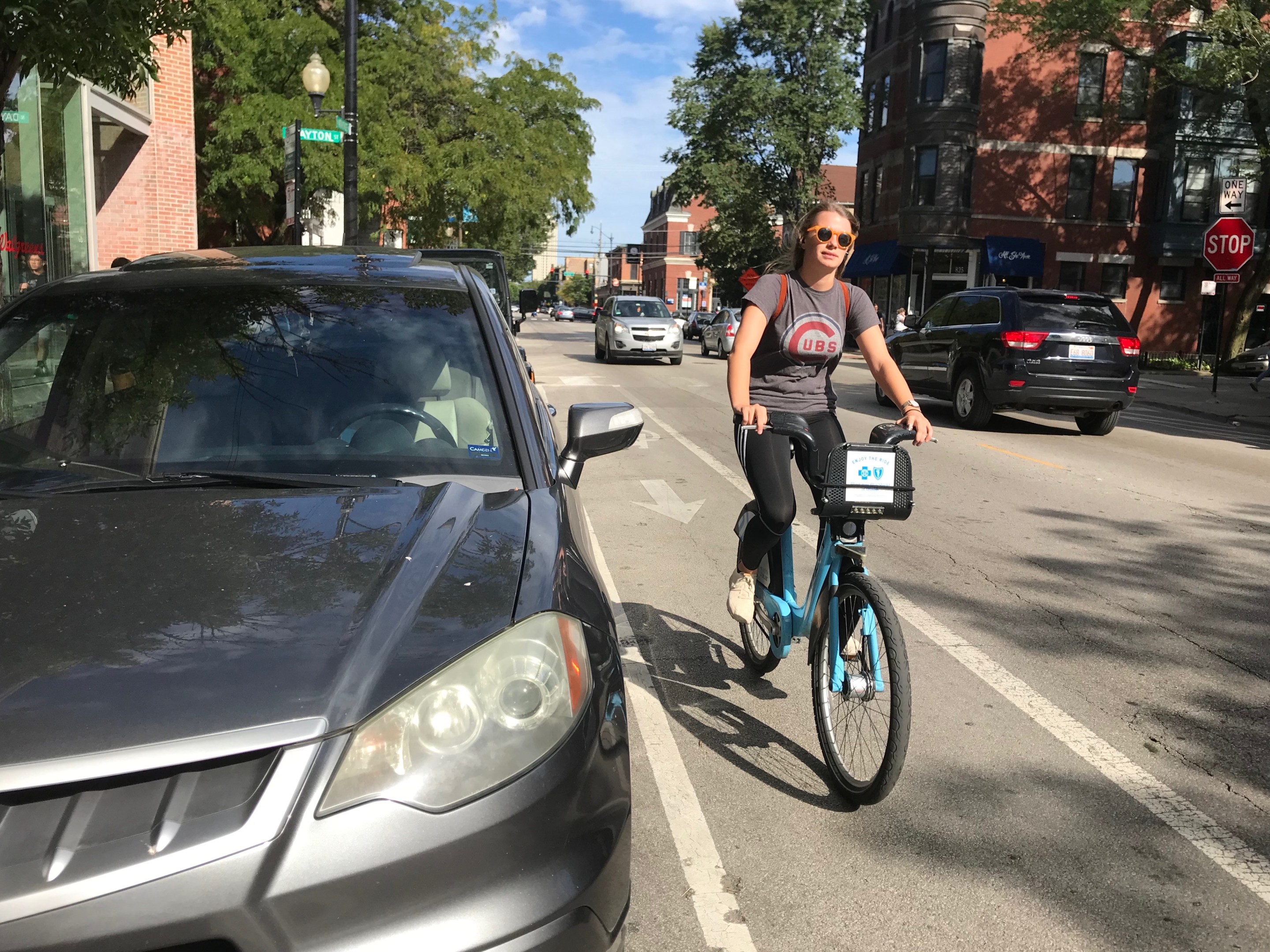On Friday, in the wake of three recent cases in which cyclists were critically injured or killed after biking into open car doors, I proposed a bike lane layout intended to help prevent doorings by encouraging cyclists to ride a few feet away from car doors. Unlike traditional "buffered" bike lanes that include a foot or two of dead space striped to the right of the bike lane to move cyclists farther to the left of car doors, my design featured a three-foot buffer on the right. That way, I argued, the rideable part of the bike lane would be largely out of the door zone.
I asserted that this would work on streets as narrow as 44 feet with parking on both sides, which dictates that the bike lanes be five feet wide, the narrowest bike lane width that the Chicago Department of Transportation will install. On such streets, CDOT stripes seven-foot parking lanes and ten-foot travel lanes. Here's the layout I posted on Friday.
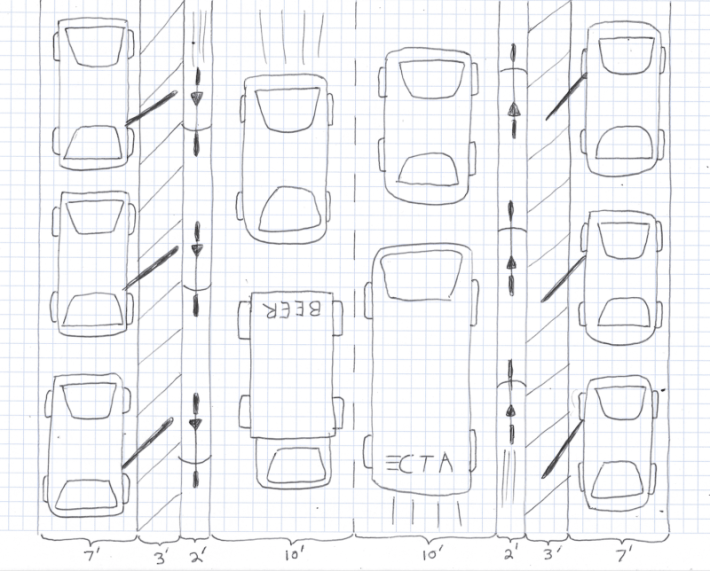
I got negative feedback about this design from several people in the comments and on Twitter. Folks argued that it places the cyclist dangerously close to moving traffic, and makes it impossible for drivers to obey the state law requiring motorists to pass cyclists with at least three feet of space. (A bike handlebars is typically about two feet wide, so if you ride with the center of your wheels a foot to the right of the left edge of the bike lane, as shown in the above sketch, the outside edge of your handlebar would be on the border of the travel lane.)
When I did the sketch, I thought that the layout I drew reflected the way I ride in bike lanes, keeping to the left side of the bikeway to stay out of the door zone, which I partly credit for the fact that I haven't been in a dooring crash for decades. I assumed that I always keep my wheels at least four feet away from parked cars (with the right end of my handlebar at least three feet away), so that I ride within the leftmost two feet of a five-foot bike lane.
But after reading the comments, I took a closer look at my original sketch, and it occurred to me that I might have been wrong. So I went out yesterday with a tape measure and cycled on bike lanes of various widths. I found that, rather than always pedaling with my wheels at least three feet from parked cars, I consistently ride with them about two feet to the right of the travel lanes.
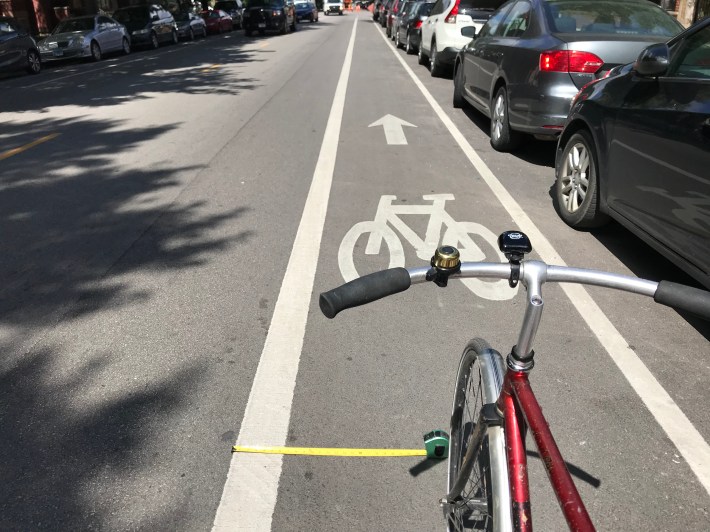
That means that there's roughly a foot of space between the left end of my handlebar and the travel lane, which more-or-less allows for three-foot passing by drivers. It also means that in a five-foot bike lane, my wheels are only about three feet from parked cars, not four, and the right end of my handlebar is roughly two feet away, not three. I apologize to Streetsblog readers for this oversight.
My observations were that many other cyclists seem to ride the same way, with their wheels about two feet to the right of the travel lane. Obviously, it was time to go back to the drawing board.
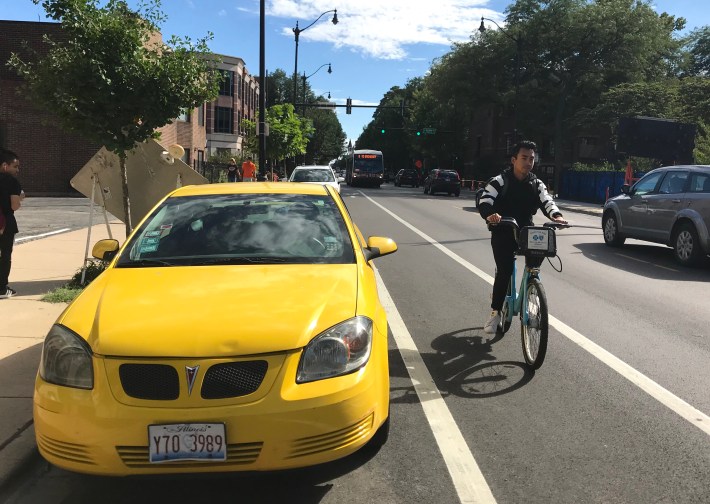
If I were to tweak my original design to encourage people to ride the way I do on a 44-foot street with five-foot bike lanes, that would require striping a one-foot-wide buffer to the left of the bikeable portion of the lane. But that would only leave room for a two-foot buffer on the right, and I wouldn't feel comfortable telling people they should ride with the right end of their handlebar two feet from car doors, even though I've apparently been doing that in five-foot bike lanes for years with no issues. That means that my concept wouldn't work on a 44-foot street after all. Again, sorry for the error.
However, it does appear that my idea would work on a 46-foot-wide street with six-foot bike lanes, which would allow for adding the one-foot buffer to the left. Here's a new sketch showing that layout. (Since people complained that my doodles of motor vehicles in the original drawing weren't to scale, the new sketch shows cars that are about 14 feet long and 5.5 feet wide, roughly in line with average car sizes.)
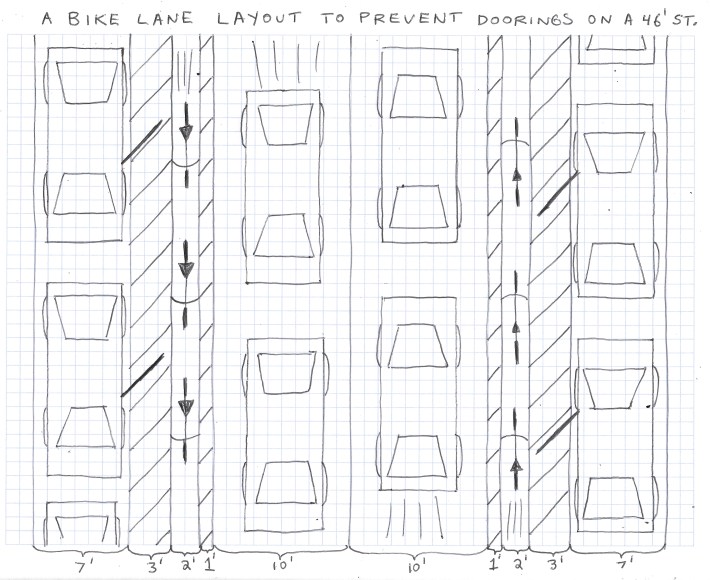
For the sake of argument here's a sketch of how CDOT might handle this situation with traditional buffered bike lanes. (Sorry, I didn't feel like drawing all those vehicles again.)

In this scenario cyclists are supposed to ride with with their wheels lined up with the point of the arrow by the bike symbol, so they'd be in the same lane position as under my new proposal, with center of their bike two feet from the travel lane and four feet from parked cars.
I'd argue that the advantage of my version is that it dictates to cyclists exactly where to ride, where as CDOT's arrow is more like a subtle suggestion. Therefore, more timid cyclists might tend to ride on the right side of CDOT's bikeable area, closer to car doors, with more danger of dooring.
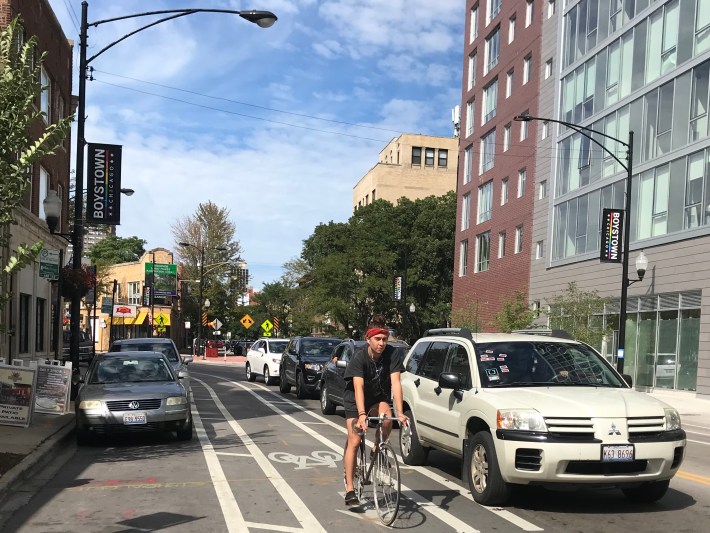
To wrap up this discussion, since there's apparently no way to stripe bike lanes on 44-foot streets with parking without cyclists either riding close to the travel lane or within the door zone, should we stop doing it? I debated this issue on Twitter with Denver-based bike writer Robert Hurst, who argued that such streets are fundamentally unsafe places for bike lanes.
It comes down to this. The street isn't wide enough for a safe bike lane. You could put in a very unsafe bike lane like the one you drew up, remove parking or a travel lane, or figure out some other way to tame the street for bike/ped use.
— Ponyvilleize (@RobertHurst157) September 8, 2018
Hurst isn't necessarily wrong. But I'd argue that Chicago has plenty of 44-foot streets with parking and five-foot bike lanes, plus lots of retail and parking turnover, that are decent places to ride. Stretches of Halsted in Lakeview, Armitage in Lincoln Park, and Damen in Lincoln Square are examples.
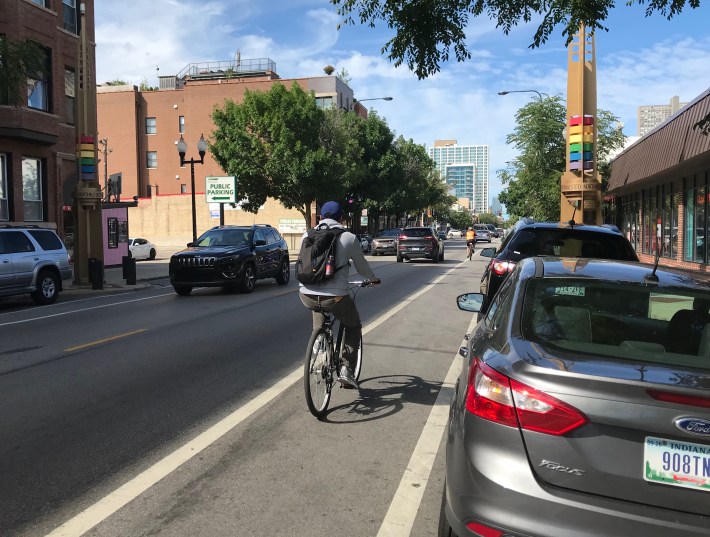
It seems to me that, even though cyclists who bike in these bike lanes generally aren't riding completely out of the door zone, the bikeways do more good than harm. They advertise the presence of bikes; they narrow the travel lanes, which calms traffic; and they encourage drivers to keep left, which gives cyclists more space.
(I'll brace myself for angry comments from followers of "vehicular cycling" guru John Forester, who argue that cyclists are safer when they ride in the center of the travel lane, and generally dislike bike lanes.)
